Zwift Ride review: the ultimate smart bike for Zwifties?
Zwift’s pioneering, entry-level smart bike is as ingenious as it is simple.
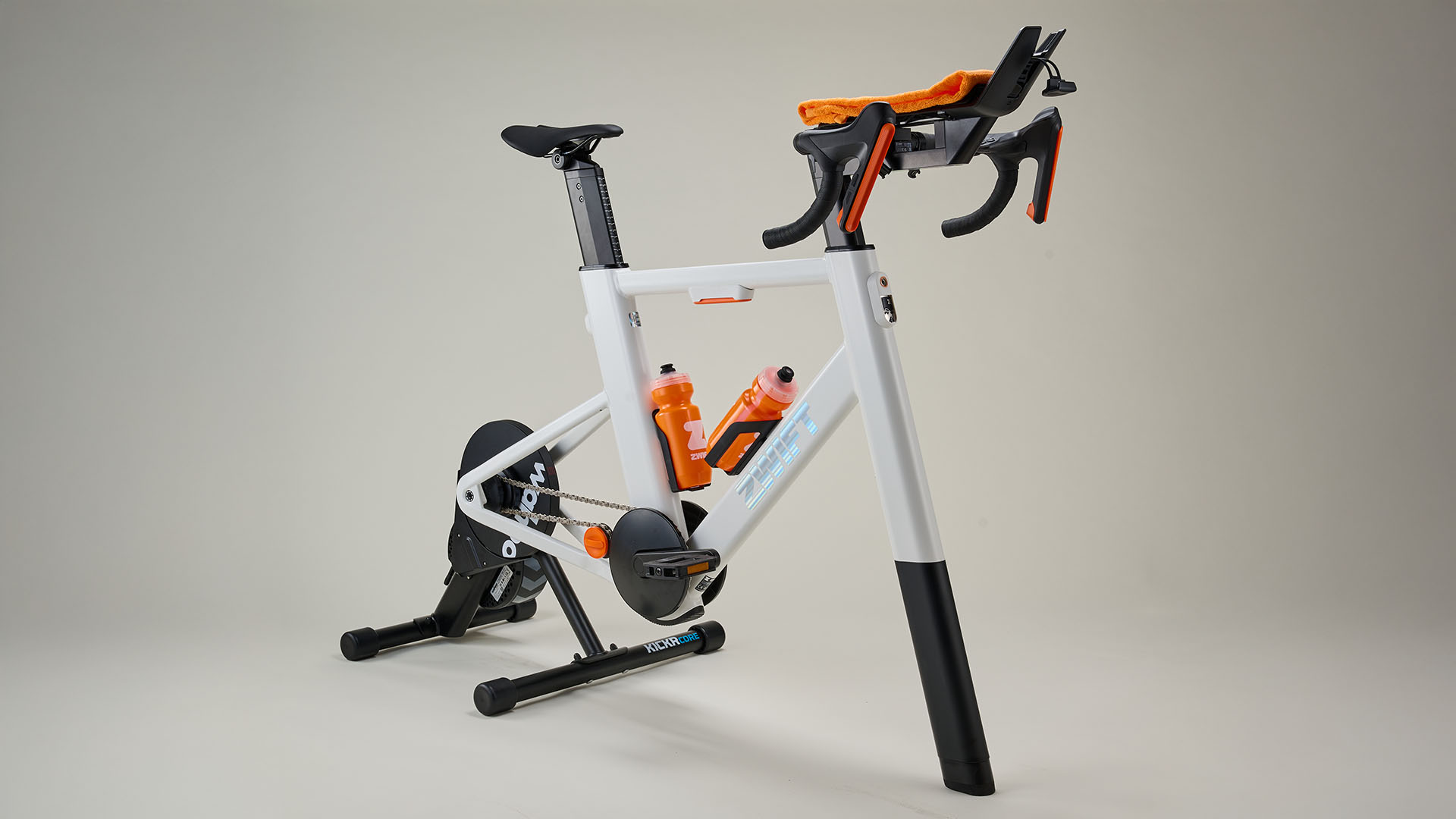
Zwift Ride is a simple concept executed brilliantly. Undemanding to use and easy to live with, it offers the finest, most comprehensive Zwift experience on the market. It also represents good value when you consider that, up until recently, any other smart bike would set you back more or less twice as much. Its potential as a fitness tool for the entire household is a significant bonus. If the cranks were adjustable, it would be near-perfect.
-
+
Best user experience for Zwift
-
+
Easy setup for multiple users
-
+
Relatively portable
-
+
Good value
-
-
Crank length is not adjustable
-
-
A lighter frame would be nice, but not critical
You can trust Cycling Weekly.

I’ve been riding Zwift’s inaugural smart bike, the Ride, on and off for about seven months now, so my impressions of it are more concrete than they were when I wrote my first ride review back in the mid-summer. The weather since then has been relentlessly atrocious, so playing with the Ride has been more on than off, but at least that’s given me ample opportunity to test it in full.
In theory, Zwift Ride is little more than a steel bike frame bolted to a Wahoo Kickr Core trainer with some gaming-style controller buttons screwed to the handlebars. In reality? Well, it’s so much more than the sum of its parts. Zwift set out to build a smart bike that offered the ultimate experience on its platform, a goal I believe it has largely achieved with the Ride. The marriage of high-tech, immersive gameplay with convenient-to-use, one-size-fits-all hardware is inspired.
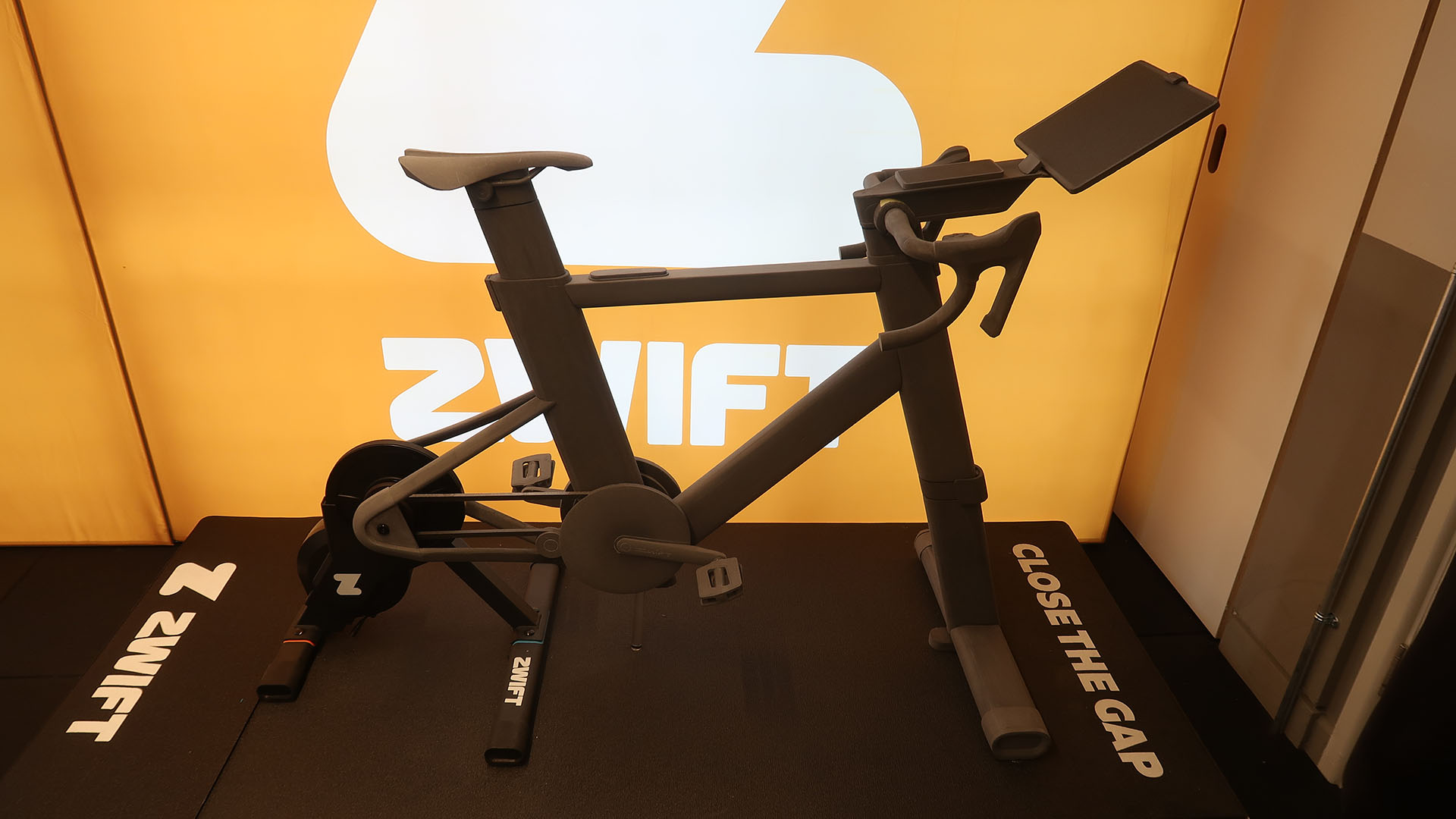
Zwift Ride is the product of numerous design iterations. This is an early prototype.
Zwift’s core business is building a subscriber base, but it recognised that two of the main barriers to entry were a) not having a suitable indoor bike to ride on, and b) the hassle of building such a rig. The solution? Ride brings together all of Zwift’s most desirable tech – Zwift Play controllers, Zwift Cog and Zwift’s virtual shifting – in an attractively-priced smart bike that’s handsome enough to grace any front room, den or kitchen.
Of course, attractively priced, doesn’t mean cheap. However, when I mentally break the Ride package down into separate components and price them up, it appears to be a fair deal. A Wahoo Kickr Core Zwift One smart trainer will set you back £449.99/$499.99 and Zwift Play controllers a further £99.99/$99.99, leaving £650.01/$700.01 for the frame, bars, saddle and chainset, which seems reasonable. Excluding the recently introduced Wattbike Proton and Elite Square, it’s about half the price of other smart bikes on the market.

Zwift Ride has been designed to look at home in any household setting.
Cleverly, and this is a masterstroke, Zwift has made the Ride even better value by developing it as a health and fitness tool suitable for an entire household. Not only is it attractive enough - or, at the very least, innocuous enough - to sit in shared spaces, it can be adjusted in seconds to fit any rider from 5' (152 cm) to 6' 6" (198 cm) tall, provided they don’t exceed the 265 lbs (120 kg) weight limit. So, if you’re crafty enough, you’ll be able to sell the purchase to your partner as an investment in wellness for the whole family.
If you already own a compatible smart trainer, Zwift now sells the frame – named Zwift Ride Smart Frame – as a standalone product. See boxout to discover more.
Construction
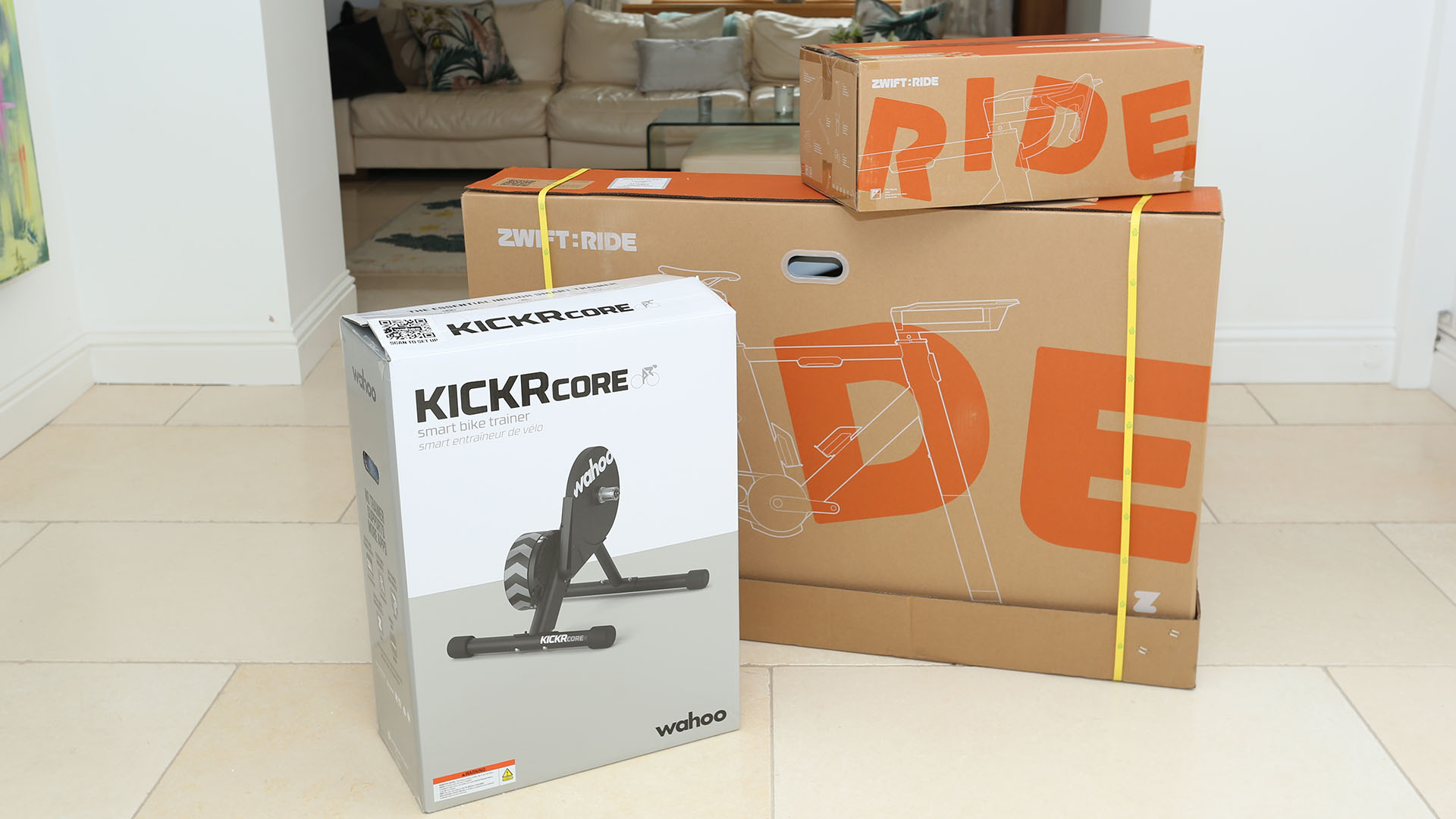
New smart bike day - Zwift Ride is packaged in three boxes.
Zwift Ride arrives in three cardboard cartons. Unintuitively, this is to save on shipping and environmental costs because, according to Zwift, packaging it all up in one large box would prove prohibitively heavy and unwieldy. The frame is supplied in a large, branded rectangular box, the handlebars, pedals and accessories in a second smaller branded box, while the Kickr Core comes in standard Wahoo packaging. Delivery costs an additional £50/$75.
The latest race content, interviews, features, reviews and expert buying guides, direct to your inbox!
The Kickr Core is exactly the same product as a standard Kickr Core Zwift One, which is the version that includes the Zwift Cog, a single sprocket hub that facilitates virtual shifting. It’s worth noting that Zwift Ride currently ships with a revised sprocket design that’s slightly quieter than the original, while the Zwift Ride Smart Frame includes the new orange-coloured Zwift Cog v2 that can be adjusted for the most efficient chainline.
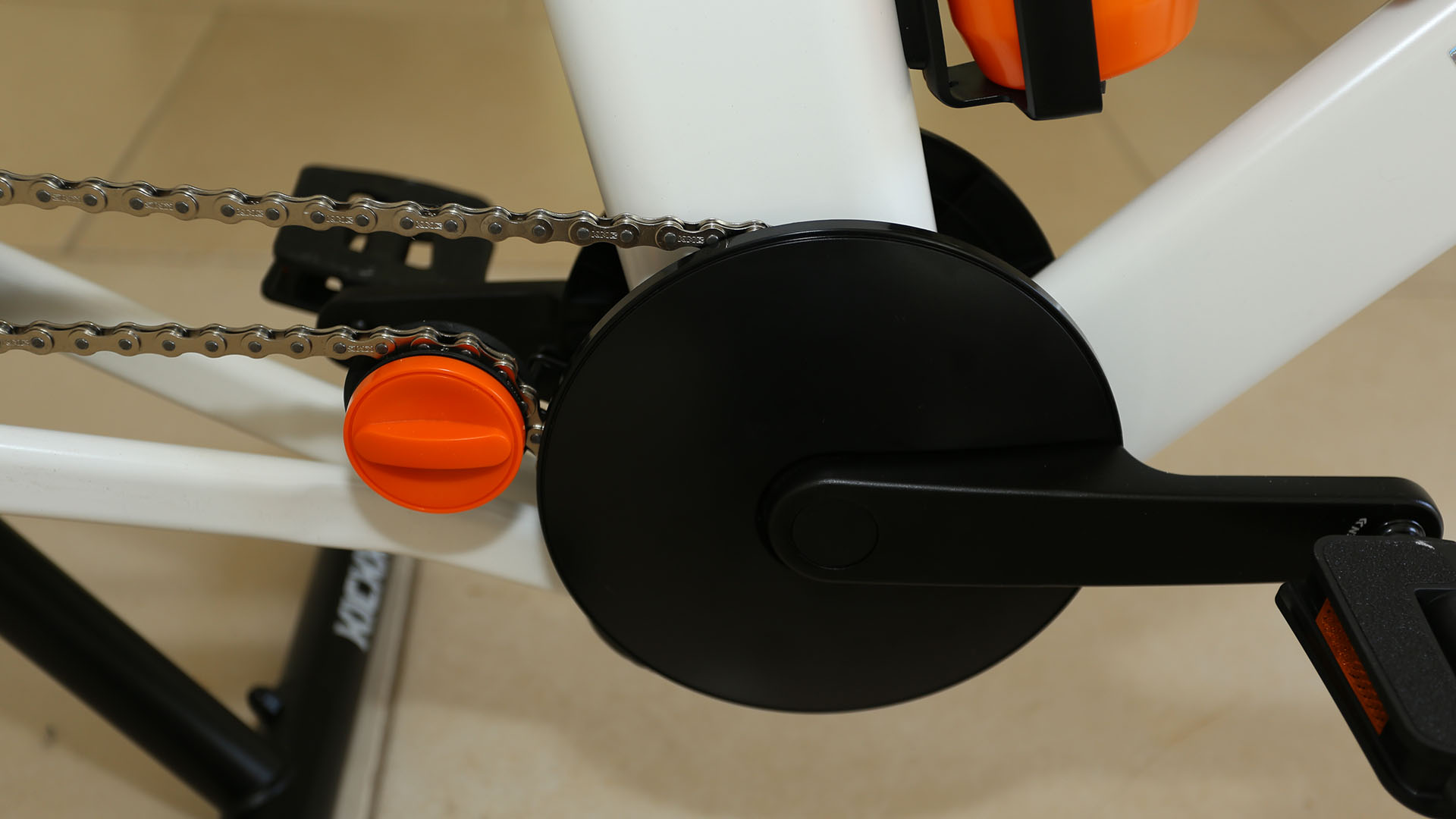
Crank length is fixed at 170mm, note the change tensioner to the left of the chainset.
The frame is steel, and at 17 kg (37.5lbs) it’s no featherweight, yet it is manageably light enough to set up without inducing a hernia. I hesitate to use the word portable, but its modular design - the separate frame and smart trainer - enables it to be easily moved around the house in two pieces. At 18kg (40lbs), the Wahoo Kickr Core weighs a similar amount.
The Ride’s cranks are fixed at 170mm, which is one of its few shortcomings. For a smart bike intended for multi-user, multi-occupancy households, this feels like a miss, so I can only speculate that Zwift needed to keep the costs under control. It’s a shame because you won’t be able to mirror the exact fit of your road/gravel bike, but frankly, most riders, especially newbies, won’t notice.
Some early users complained of bent chainrings on delivery, so in response Zwift has beefed up the packaging with an additional internal brace. Hopefully, this will stop bikes from suffering damage in transit. Mounted on the chainring is a robust, inexpensive, easy-to-replace 9spd chain that’s held taught by an orange-coloured tensioner that can be disengaged by simply flipping it downwards.
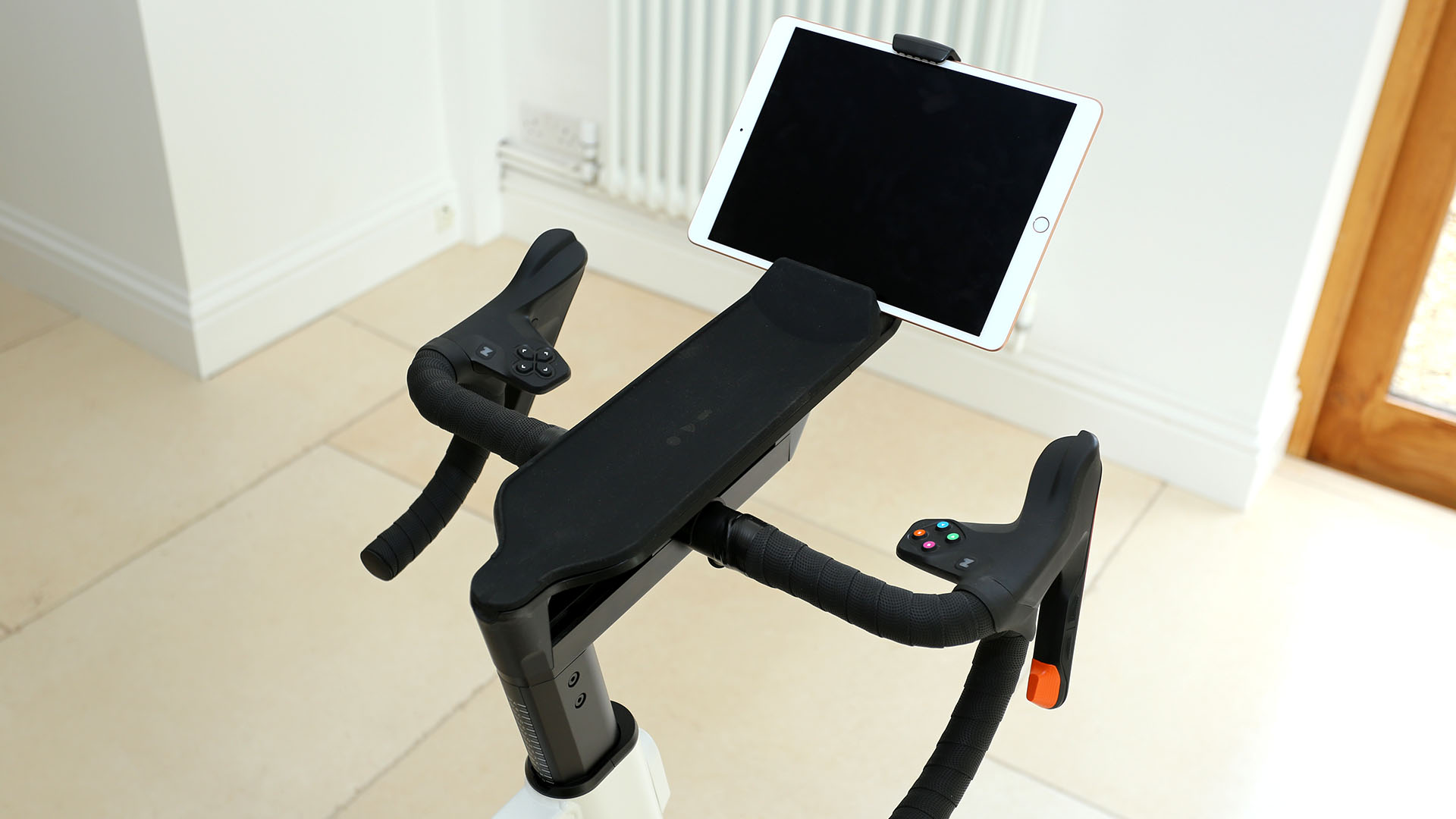
Zwift Ride cockpit, showing handlebar controllers, phone mat and optional tablet holder.
The handlebars are no-nonsense alloy affairs with a round profile that’s comfortable enough. When I first rode the Ride, I wasn’t sure about the bar tape; it felt a little too slick and slippery for my tastes, but it’s since worn in nicely. If you want more grip and cushion, then it’s easily replaced with one of the best handlebar tapes at a later date.
Bar width is 42cm, measured at the tube centres, which works out to approximately 44cm at the outside edges. At 190cm tall, I’m a big rider so these feel comfortable to me but much smaller riders, or those used to a finely tuned aero position, may want to consider swapping them out for something narrower.
The controllers provide the same functionality as Zwift’s Play product, but they’re far more elegantly integrated into the cockpit. Just like Play, the four arrows on the left-hand pad enable you to navigate menu items, whereas the colourful right-hand action buttons allow you to confirm or reject a command, give Ride Ons, activate PowerUps and more. On each ‘lever’ are a pair of small buttons to shift virtual gears, a large orange paddle to handle braking and steering and a dedicated but configurable PowerUp/Ride On button.
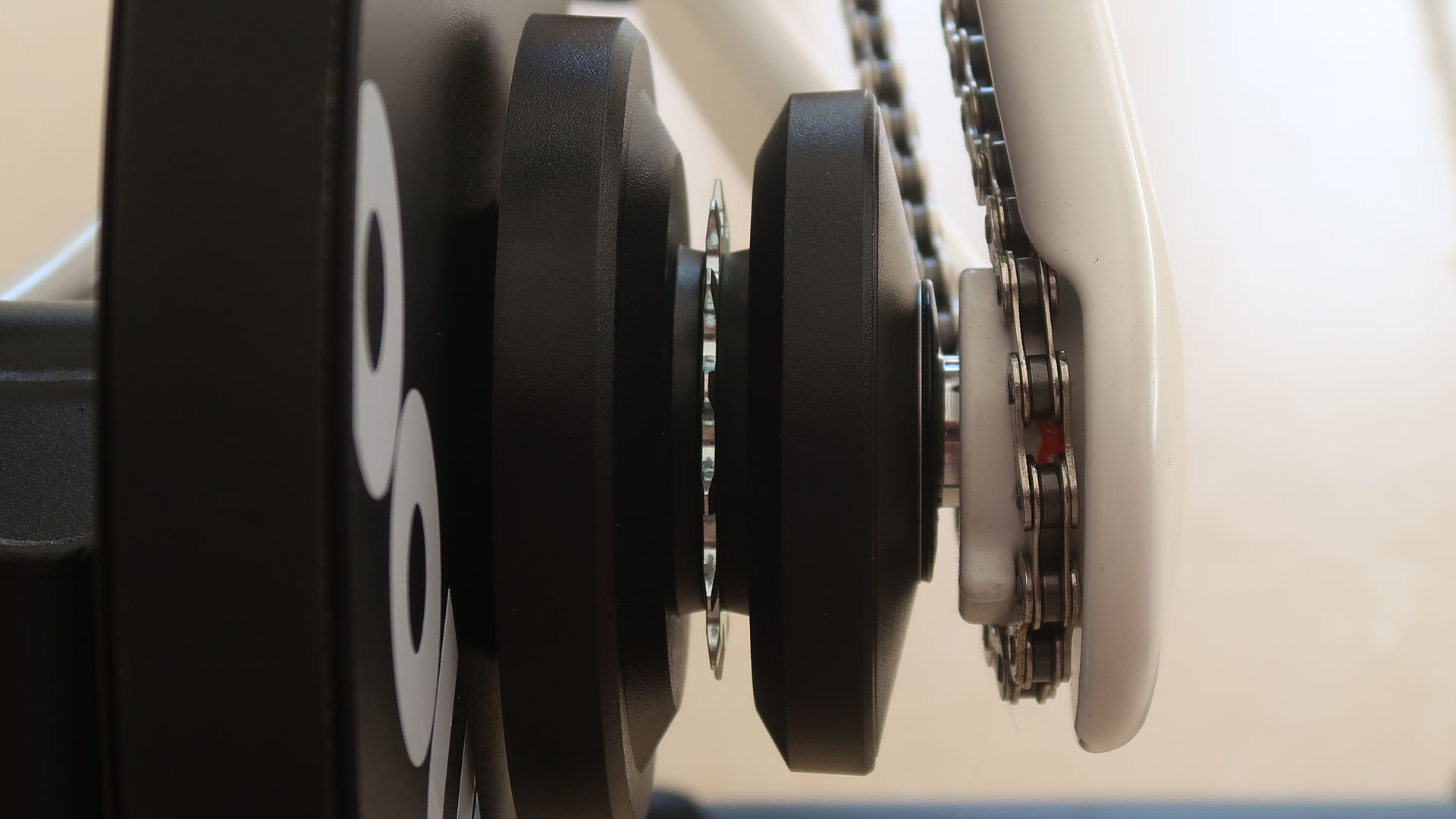
There are numerous clever design elements, including the neat chain hook in the dropout that keeps the 9-speed chain clear when securing the frame to the trainer.
Setup really couldn’t be easier, even for an inept buffoon like me. Once the legs have been bolted onto the Wahoo Kickr Core, it’s simply a matter of dropping on the frame and securing the two components with a thru-axle.
Zwift’s product designers have included a little chain hook on the drive side dropout, a neat feature that keeps the chain out of the way while the frame is being guided into position on the Kickr Core. Once the frame is in place, the chain can be released from the hook (tip: it’s covered in factory grease, so wear gloves), seated on the sprocket and tensioned with the aforementioned chain tensioner. The chain hook, together with a rubber foot mounted below the bottom bracket, keeps the chain from marking flooring if, for whatever reason, you ever need to rest it down without the Kickr Core. Nice touches.
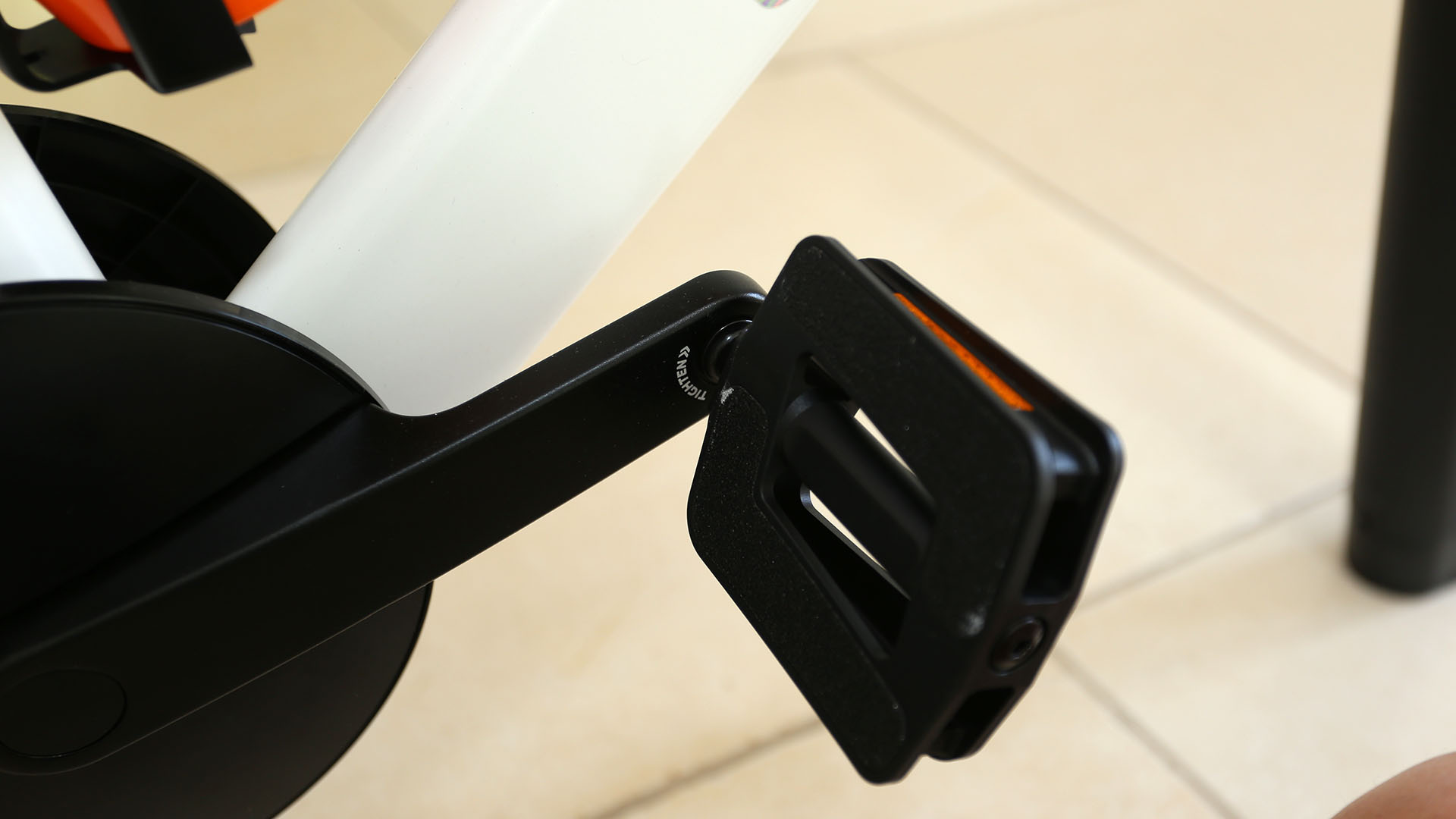
Another nice touch for novices is the directional mark on the crank to guide the installation of pedals.
Zwift has included flat pedals with the Ride, a nod to novice riders, households with multiple users and, perhaps, a sign that it is hoping to recruit fitness enthusiasts as much as die-hard cyclists. Handily, it’s even marked the thread rotation direction on each crank.
Finally, the stem and adjustable handlebar holder need to be slid into the frame and the handlebars eased on, which is a two-minute job. When in place, the adjustable handlebar assembly transforms into a phone/snack tray with the addition of a soft silicone mat. If you intend Zwifting with an iPad then I recommend buying the optional tablet holder, which secures your device in place with a strong silicone strap. At £39.99/$49.99 the cost does seem slightly excessive, but it’s well worth the expense.
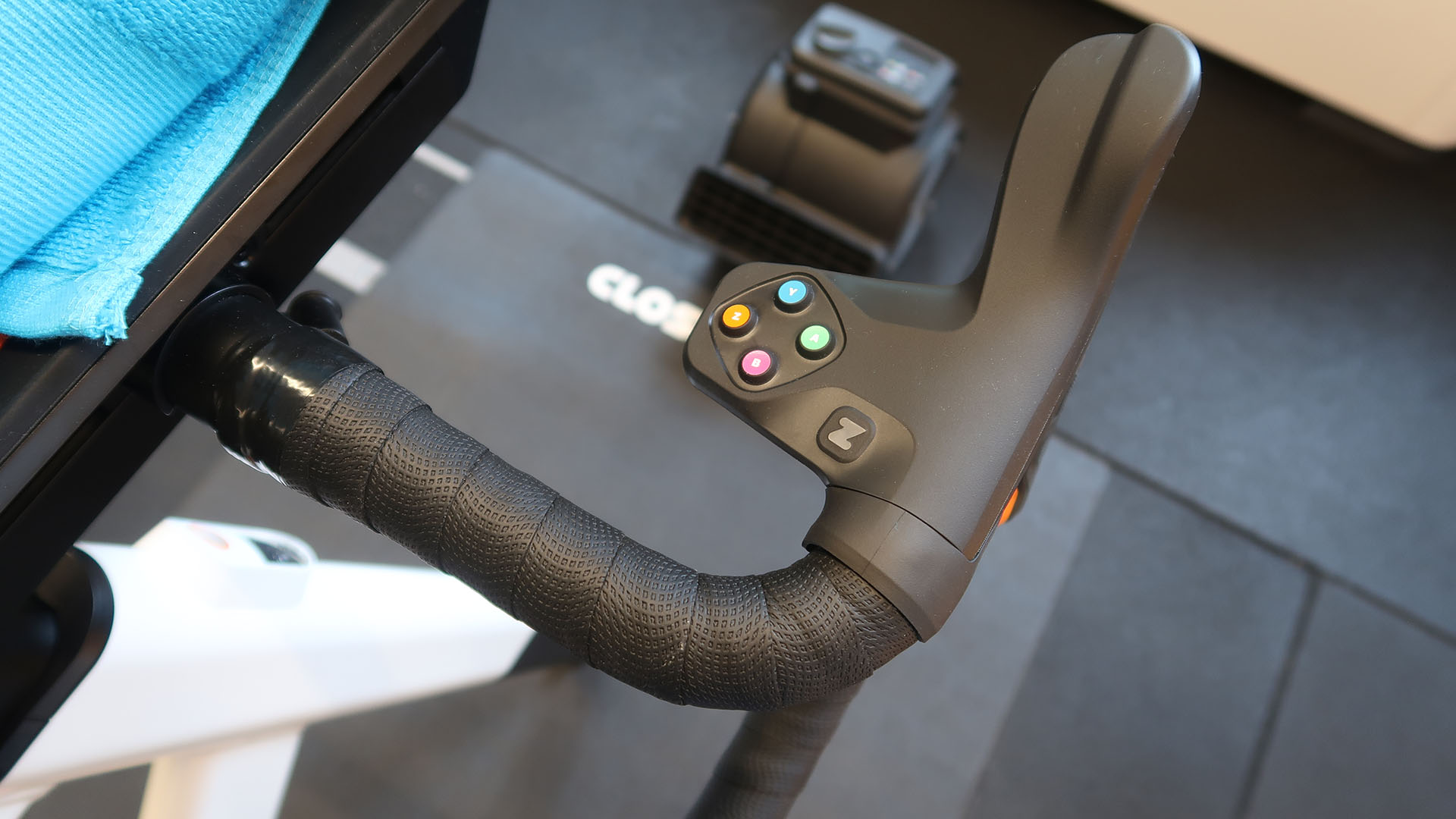
Right-hand action controller.
The left and right front controllers work independently and connect via Bluetooth, so there’s no complex internal wiring within the frame to worry about. They do charge via USB as separate units, but Zwift includes a Y-cable for this purpose, which can be optionally routed down the front frame leg with little magnets. Battery life is 20 hours, so to keep cable spaghetti to a minimum, I connect them up to charge between rides, often using a portable power pack.
Once the hardware is assembled, there’s just the simple matter of getting all the constituent parts talking over Bluetooth. Install the Wahoo app to register the Kickr Core and download any firmware updates, turn on the individual handlebar controllers and fire up Zwift on your tablet or other device. Strap on a heart rate monitor belt too, if this metric is important to you (it should be). The Zwift app handles all the connections - the controllers, heart rate, power meter (from the Kickr Core) and seamlessly controls the functionality of the Kickr Core. I didn’t try setting up the Ride using the Zwift app on Apple TV but, if this is a route you want to explore, bear in mind that it only accepts two Bluetooth channels, which isn’t enough. The solution is to use the Zwift Companion app to consolidate the channels before routing them to Apple TV.
From box to first ride, most users will be up and running, I mean cycling, in about 30 minutes.
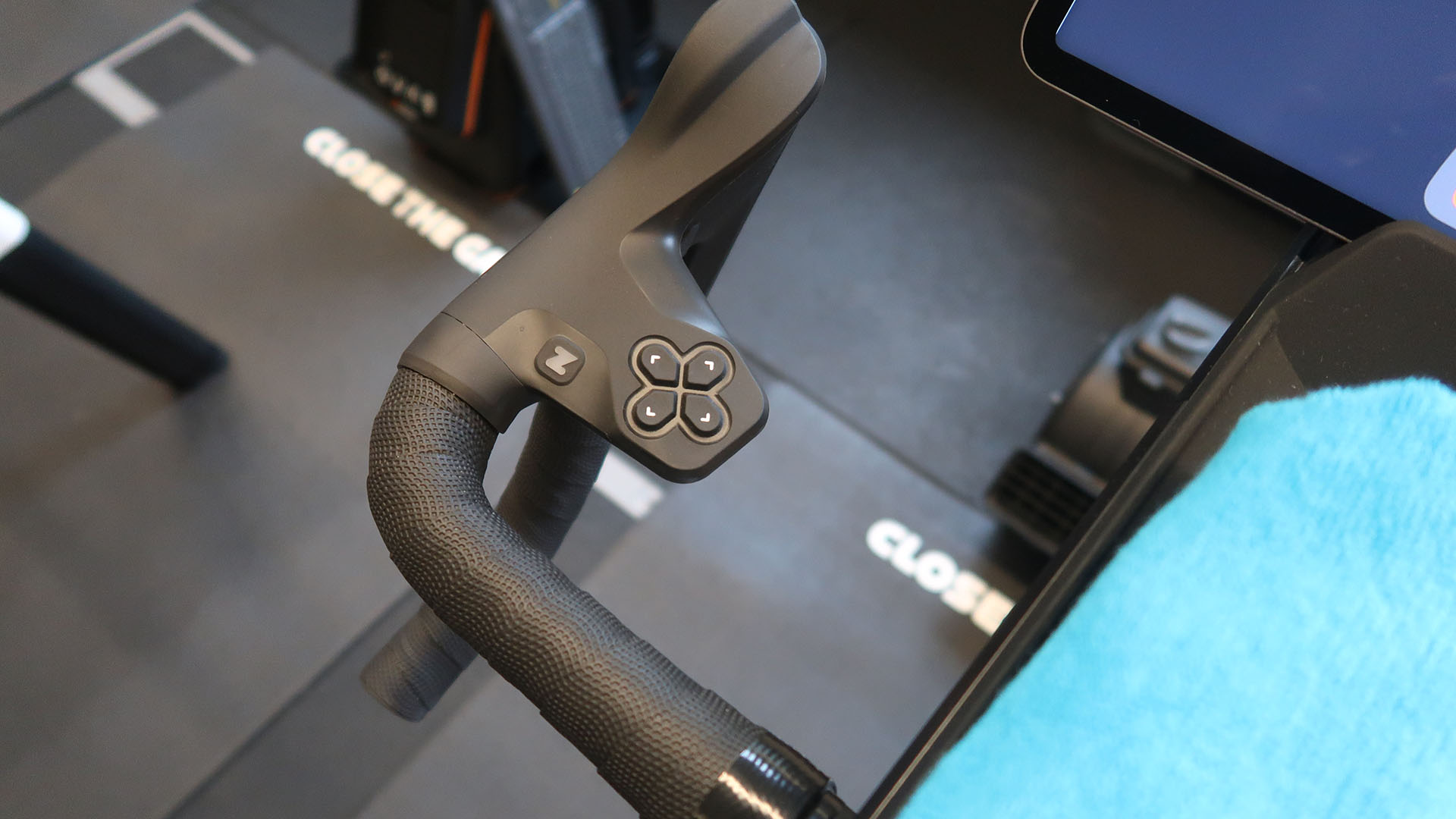
Left-hand navigation controller
The Ride
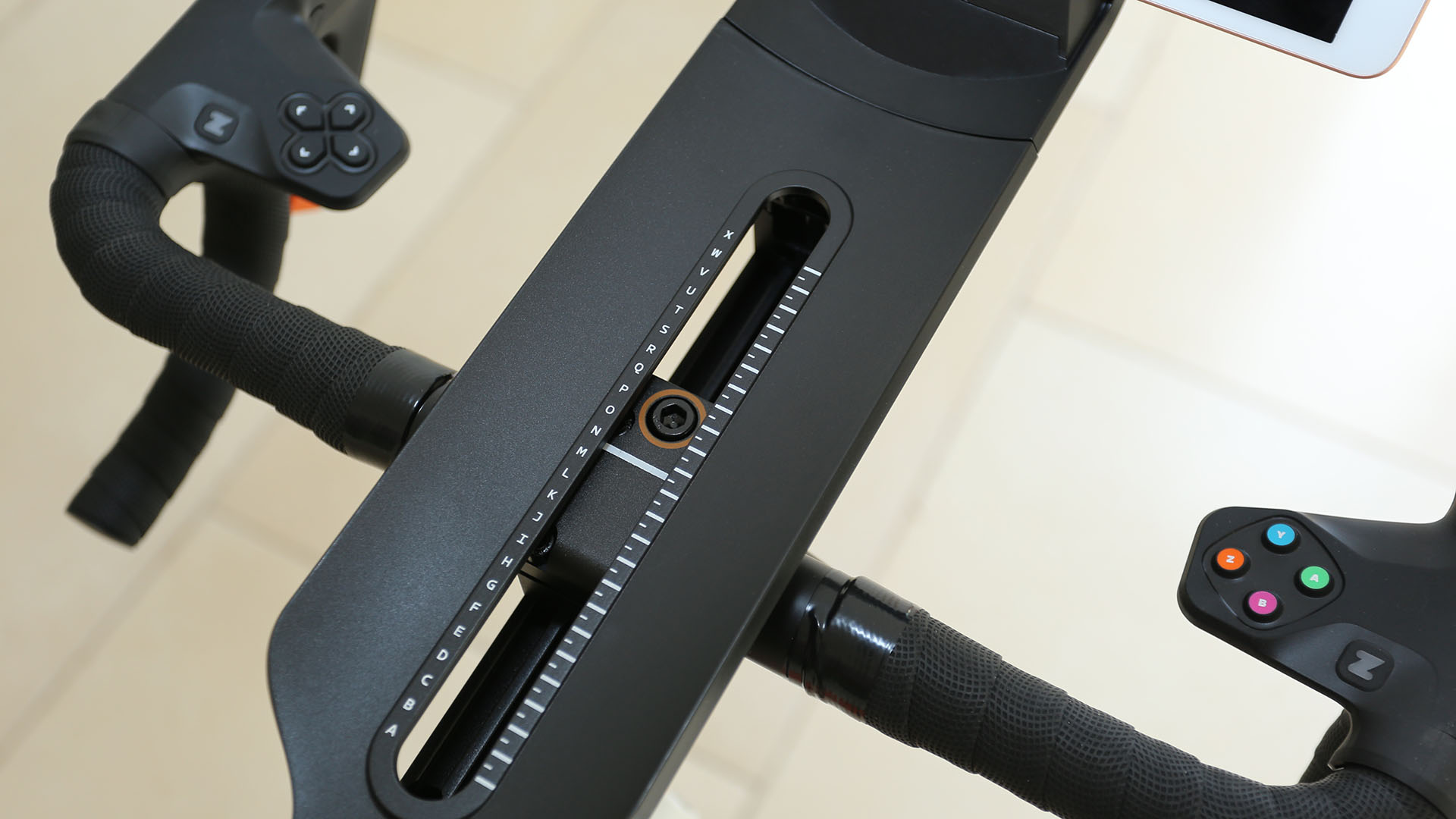
Zwift's sizing by letter makes bike-fit simple to understand and easy to execute
The product design team at Zwift has clearly put a lot of effort into making bike fit as intuitive as possible for multiple riders who, if my household is anything to go by, are likely to be very different sizes. The Ride is configurable for saddle height, stack and reach, via the seat post, stem and sliding handlebar holder respectively, so the one frame size should fit all.
Zwift has put the smart into this smart bike by basing all bike fit measurements on height and height alone. Each adjustable component is marked with a scale delineated in centimetres but marked with letters from A to Z. To set the Ride up for your size, all you need to do is find the corresponding letter next to your height on a chart Zwift supplies in the box (and online should you misplace it). Then, to dial in the correct fit, just slide the seat post, stem and handlebar position to your allocated letter.
Zwift Ride Smart Frame
If you already own a compatible smart trainer, Zwift recognises that buying a second one as part of the Ride package makes no sense. Zwift Ride Smart Frame is almost exactly the same product sans Wahoo Kickr Core but includes the latest chainline adjustable Zwift Cog plus an additional taller foot for the front leg that remedies any height incompatibilities.
Compatible trainers include Wahoo Kickr Core, Wahoo Kickr, Wahoo Kickr Move (locked), Elite Direto XR, Van Rysel D100, JetBlack Victory, Zwift Hub One, Zwift Hub. The list of compatible trainers is growing, so continue to check with Zwift.
Zwift Ride Smart Frame costs £749.99/$799
I'm 190cm tall, so my letter is T. It sounds implausible, but setting the seatpost, stem and bars to the T setting places me into a comfortable, if generic, endurance position. My wife, an H (166cm), is dialled in within seconds, as is my daughter, who is a J (170cm). Of course, if you’re used to a more aggressive stance there’s nothing to stop you slamming the stem or increasing the reach. However, I suspect this simple letter-based system will be good enough for even experienced riders, because assuming an aero position in Zwift carries no benefit, whereas remaining comfortable for a long time does.
Zwift has made dialling these positions even easier by specifying 8mm hex bolts throughout the bike, which also happens to be a standard for pedals. One of the most impressive features of the bike is the supplied 8mm hex key, which tucks neatly into a little magnetic housing beneath the top tube so that it’s less likely to go walkies. Coloured bright orange so it’s even less likely to get lost, it’s the only tool you’ll ever need to build up and adjust the entire frame. Simple but ingenious.
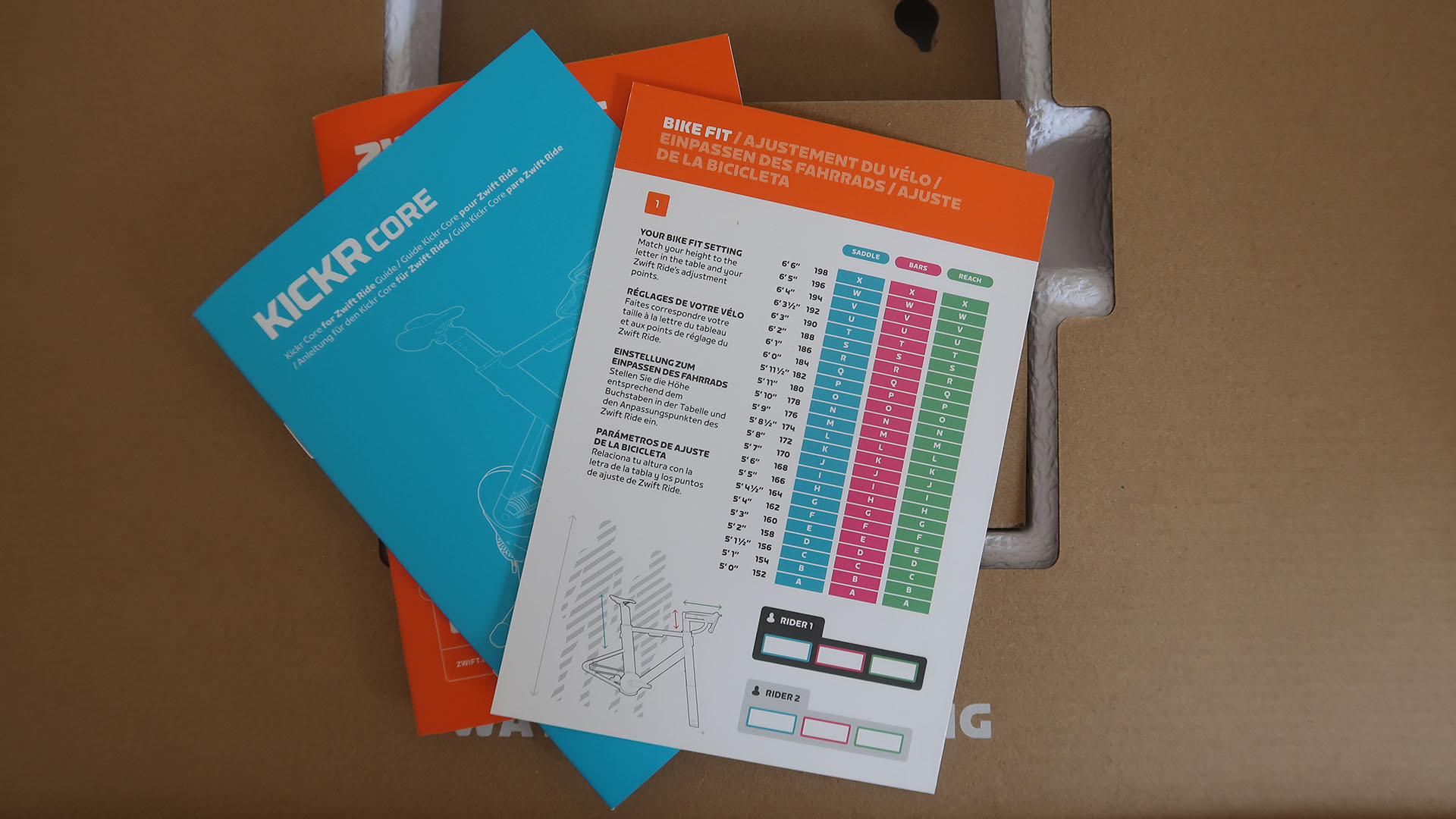
Zwift sizing chart, just match you're height to a single letter. Surprisingly, the method works really well.
Riding the Ride, my impressions have changed little since I first hopped on back in the summer. The ride feel is excellent for a ‘static’ bike. There’s just enough swing and sway emanating from the slender front leg and relatively short supports on the Kickr Core to make the Ride feel alive. Sprinting, or standing up on the pedals to climb can induce a fair bit of wobble, but it never feels dangerously out of control. I’m quite tall, with a high centre of gravity, so your mileage may vary. Similarly, attaching a trainer with a wider stance will likely change the ride feel considerably.
The short-nosed saddle has held up well, I’m comfortable on it for long periods but saddle choice is such a personal preference it’s hard to be objective. The flat pedals have gone, replaced by a pair of Shimano M520s that I had gathering dust. I may swap these over to road pedals soon.
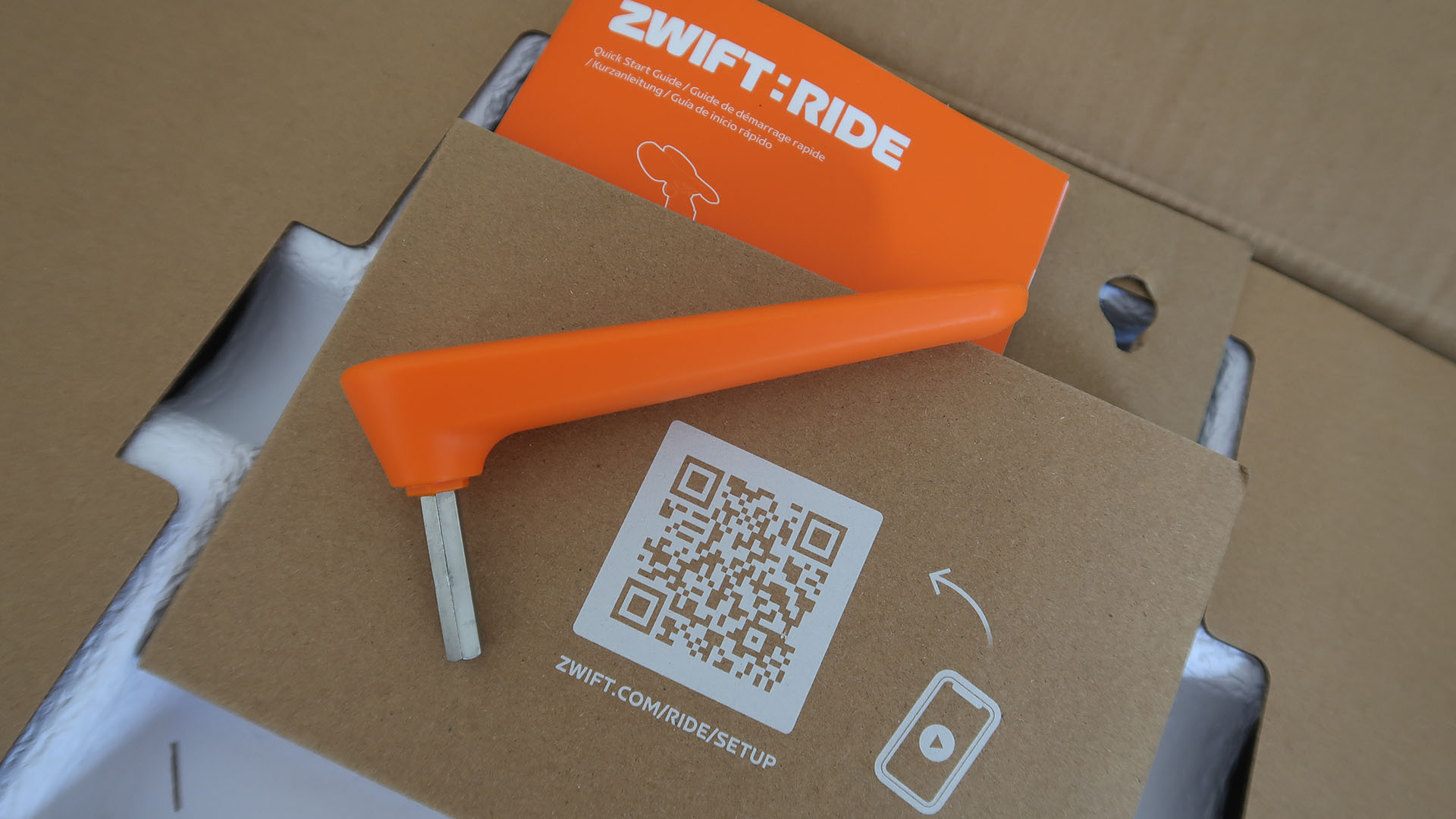
The Zwift Ride frame key is the only tool needed to build and adjust the frame.
I still find the Ride to be quiet, it’s certainly less intrusive than my Cardio54 fan. I also continue to be blown away by virtual gearing and its implementation on Zwift Ride. Twenty-four gears, with shifting in the style of Shimano, Sram or plain sequential via the lever buttons. A choice of ranges to suit the terrain, including 53/39, 10-28; 48-35, 10-33 and 43/30, 10-36. Smooth, fast, silent shifting with zero interruption and no mechanical issues to fret about. What’s not to like?
The biggest positive impact on my indoor riding has been gained by becoming thoroughly familiar with the navigation and action buttons, which are now second nature. The ability to cycle through menus, select different views, activate PowerUps and so on without losing focus on my riding has been transformative.
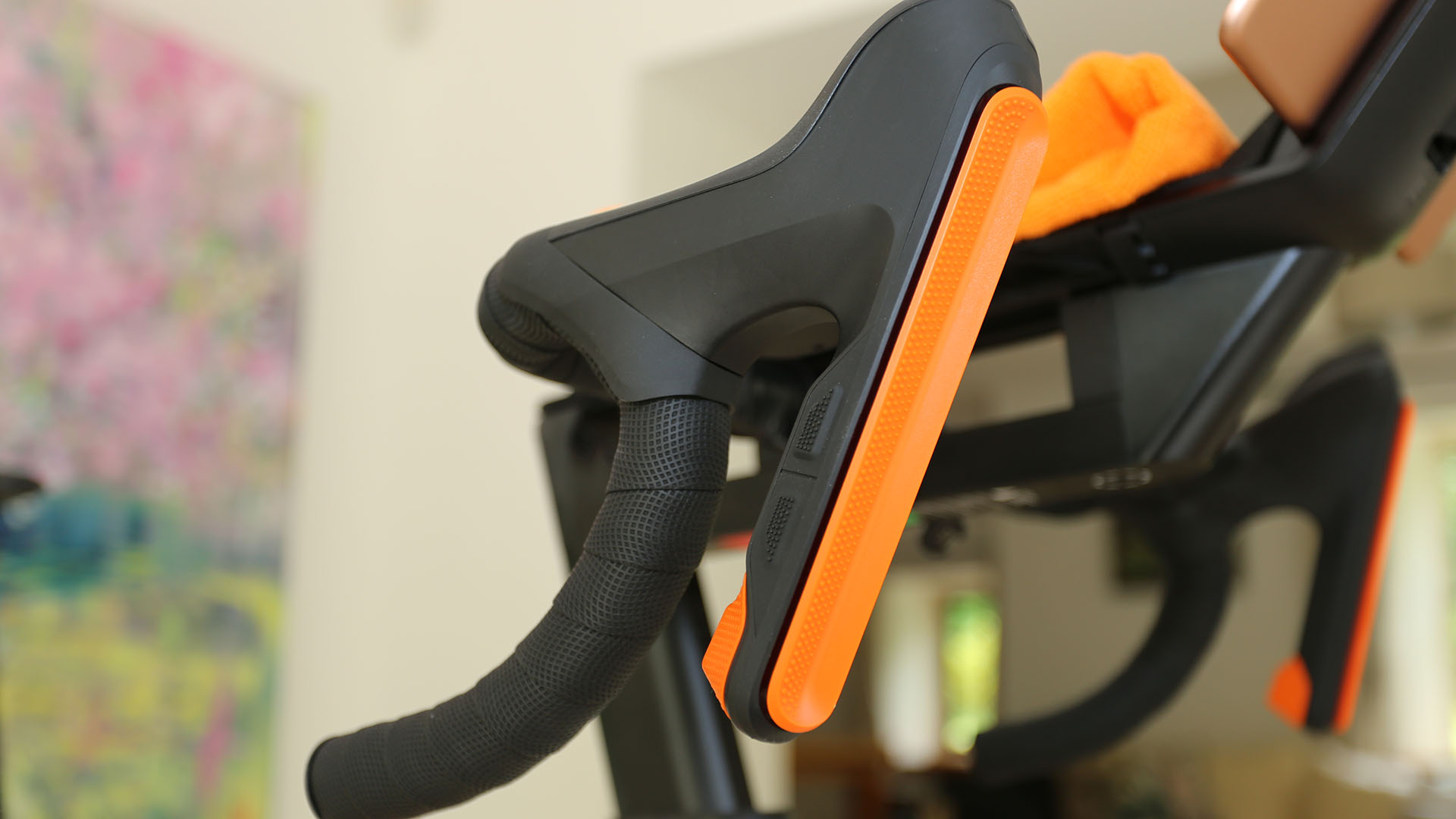
Note the shifter buttons on the lever. The orange paddle is for steering and braking.
Value and conclusions

Zwift Ride - the ultimate vehicle for Zwifties?
Right at the beginning of this review, I made two observations. Firstly, the Ride is little more than a Zwift Play-equipped steel frame attached to a smart trainer, and secondly, it’s far more than the sum of its parts. Both remarks are true but their validity rests with the consumer.
If you’re the mend and make do type, who is more concerned with budget than performance and convenience then by all means repurpose an old frame, sized for you and only you, and save yourself a packet. There’s no shame in that.
However, if you’re looking for the smoothest, easiest passage to becoming a fully signed-up Zwifty, then the Ride is a near-perfect vehicle to jump aboard. It looks smart, it is smart and it’s a doddle to share among the whole household. Yes, the controls have similar functionality to Zwift Play but the execution is so much more refined.
Priced at £1,199.99/$1,299.99 the Ride isn’t affordable for everyone, but it does represent good value. There are so many small, elegant touches that make the user experience so special.
Zwift has pioneered this space with the Ride, but there are two new arrivals chasing the same market. The Elite Square and the Atom Proton are both worth considering but neither offer the same level of Zwift integration as the Ride.
Specs
Frameset Specs
Price: £1,199.99/$1,299.99
Weight: 17kg
Controller battery life: 20 hours
Drivetrain: Zwift Cog with 9 speed chain
Frame finish: White. Powder Coated
Frame material: Steel
Crank length: 170mm
Bar width: 42cm
Wahoo Kickr Core Specs
Maximum Power Output: 1800 Watts
Maximum Simulated Grade: 16%
Minimum Simulated Grade: -10%
Product Weight: 40 lb / 18 kg
Drivetrain: Belt Drive
Resistance Type: Electromagnetic
Power Accuracy: +/-2%
Connectivity: ANT+, ANT+ FE-C, and up to three Bluetooth Connections

Simon spent his childhood living just a stone’s throw from the foot of Box Hill, so it’s no surprise he acquired a passion for cycling from an early age. He’s still drawn to hilly places, having cycled, climbed or skied his way across the Alps, Pyrenees, Andes, Atlas Mountains and the Watkins range in the Arctic.
Simon now writes for Cycling Weekly as a freelancer, having previously served as Tech Editor. He’s also an advanced (RYT 500) yoga teacher, which further fuels his fascination for the relationship between performance and recovery.
He lives with Jo, his yoga teacher wife, in the heart of the Cotswolds, with two rescue cats, five bikes and way too many yoga mats. He still believes he could have been a contender if only chocolate weren’t so moreish.